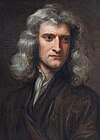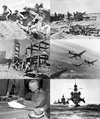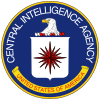Wikipedia:VideoWiki/Homi J. Bhabha
| VideoWiki/Homi J. Bhabha (Tutorial) | |
|---|---|
| File:En.Video-Homi J. Bhabha.webm | |
| Link to Commons | |
| Steps for video creation | |
| Step 1 | Preview my changes (10 sec) |
| Step 2 | Upload to Commons (10 min) |
Introduction[edit]
Dr Homi Jehangir Bhabha was an Indian nuclear physicist, founding director, and professor of physics at the Tata Institute of Fundamental Research.[1]

Early life[edit]
He was born on 30 October 1909. His father was Jehangir Hormusji Bhabha, a well known Parsi lawyer and his mother was Meheren. Homi Jehangir Bhabha was born into a wealthy and prominent industrial family.[2]

Early education[edit]
He received his early studies at Bombay's Cathedral and John Connon School and entered Elphinstone College at age 15 after passing his Senior Cambridge Examination with Honours.[2]

Later education[edit]
He then attended the Royal Institute of Science in 1927 before joining Caius College of Cambridge University.[2]

Studies and research at Cambridge University[edit]
Bhaba excelled in his mathematical studies under Paul Dirac to complete the Mathematics Tripos. Meanwhile, he worked at the Cavendish Laboratory while working towards his doctorate in theoretical physics.[3]


Salomons Studentship[edit]
During the 1931–1932 academic year, Bhabha was awarded the Salomons Studentship in Engineering. In 1932, he obtained first class on his Mathematical Tripos and was awarded the Rouse Ball travelling studentship in mathematics.[3]

Work in Nuclear Physics[edit]
In January 1933, Bhabha received his doctorate in nuclear physics after publishing his first scientific paper, "The Absorption of Cosmic radiation". In the publication, Bhabha offered an explanation of the absorption features and electron shower production in cosmic rays.[3]

Isaac Newton Studentship[edit]
The paper helped him win the Isaac Newton Studentship in 1934, which he held for the next three years.[3]

Fowler and Bohr[edit]
The following year, he completed his doctoral studies in theoretical physics under Ralph H. Fowler. During his studentship, he split his time working at Cambridge and with Niels Bohr in Copenhagen.[3]

Bhabha scattering[edit]
In 1935, Bhabha published a paper to calculate the cross section of electron-positron scattering. Electron-positron scattering was later named Bhabha scattering, in honour of his contributions in the field.[3]

WWII[edit]
In 1937, Bhabha was awarded the Senior Studentship of the 1851 exhibition, which helped him continue his work at Cambridge until the outbreak of World War II in 1939.[3]

Return to India[edit]
In September 1939, Bhabha was in India for a brief holiday when World War II started, and he decided not to return to England for the time being.[3]

IISc[edit]
He accepted an offer to serve as the Reader in the Physics Department of the Indian Institute of Science, then headed by renowned physicist C V Raman.[3]

FRS[edit]
Later, on 20 March 1941, he was elected a Fellow of the Royal Society.[3]

TIFR[edit]
With the help of J R D Tata, he played an instrumental role in the establishment of the Tata Institute of Fundamental Research in Mumbai.[3]

Career[edit]
In 1948, Nehru led the appointment of Bhabha as the director of the nuclear program and tasked Bhabha to develop the nuclear weapons soon after.[4]

International front[edit]
In the 1950s, Bhabha represented India in IAEA conferences, and served as President of the United Nations Conference on the Peaceful Uses of Atomic Energy in Geneva, Switzerland in 1955.[3]

AEET and DAE[edit]
The Atomic Energy Establishment Trombay (AEET) started functioning in 1954, the same year the Department of Atomic Energy (DAE) was also established, under his leadership.[5]

Padma Bhushan[edit]
He was awarded Padma Bhushan by Government of India in 1954.[6]

Advisory and INCSR[edit]
He later served as the member of the Indian Cabinet's Scientific Advisory Committee and provided the pivotal role to Vikram Sarabhai to set up the Indian National Committee for Space Research.[3]

Three Stage Nuclear Power Programme[edit]
Bhabha is generally acknowledged as the father of Indian nuclear power. Moreover, he is credited with formulating a strategy of focussing on extracting power from the country's vast thorium reserves rather than its meagre uranium reserves.[7]


Death[edit]
Bhabha died when Air India Flight 101 crashed near Mont Blanc on 24 January 1966.Misunderstanding between Geneva Airport and the pilot about the aircraft position near the mountain is the official reason of the crash.[8]

Assassination theories[edit]
Many possible theories have been advanced for the air crash, including a claim the Central Intelligence Agency (CIA) was involved in order to paralyse India's nuclear program.[9]

References[edit]
- ^ "Homi Jehangir Bhabha". Physics Today. 19 (3): 108. 1966. doi:10.1063/1.3048089.
- ^ a b c Raj, Baldev and Amarendra, G. "A legend lives on Homi Jehangir Bhabha (1909–1966)". Indira Gandhi Centre for Atomic Research. Archived from the original on 22 May 2013. Retrieved 24 July 2013.
{{cite web}}: CS1 maint: multiple names: authors list (link)> - ^ a b c d e f g h i j k l m "Bhabha Homi Jehangir". Vigyan Prasaar. Retrieved 7 October 2019.
- ^ Richelson, Jeffrey Richelson. "U.S. Intelligence and the Indian Bomb". The National Security Archive, The George Washington University. Published through National Security Archive Electronic Briefing Book No. 187. Retrieved 24 January 2012.
- ^ Guha, Ramachandra (2008). India After Gandhi. Harper Perennial. p. 216. ISBN 978-0060958589.
- ^ "Padma Awards" (PDF). Ministry of Home Affairs, Government of India. 2015. Archived from the original (PDF) on 15 October 2015. Retrieved 21 July 2015.
- ^ Rahman, Maseeh (1 November 2011). "How Homi Bhabha's vision turned India into a nuclear R&D leader". Mumbai: Guardian. Retrieved 1 March 2012.
- ^ Haine, Edgar A. (2000). Disaster in the Air. Associated University Presses. pp. 146–147. ISBN 978-0-8453-4777-5.
- ^ Homi Bhabha: The physicist with a difference. News.in.msn.com (23 June 2015). Retrieved on 30 June 2015.
